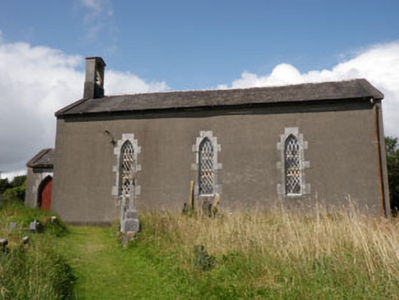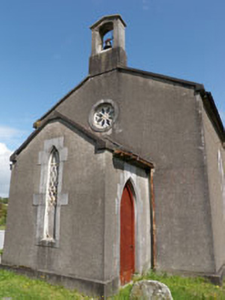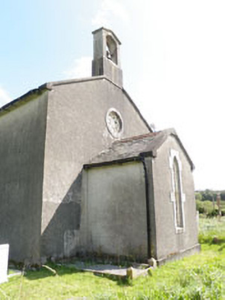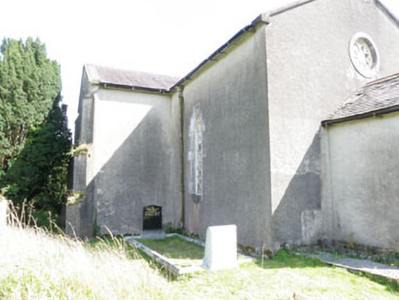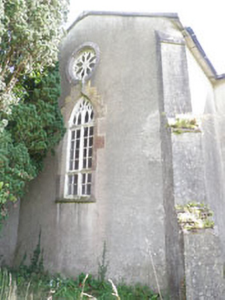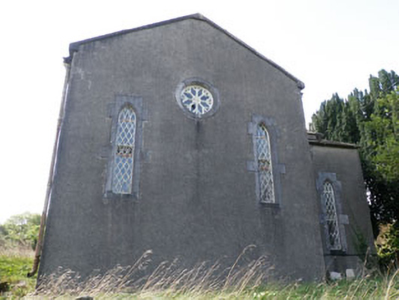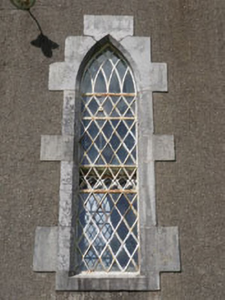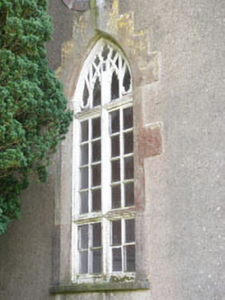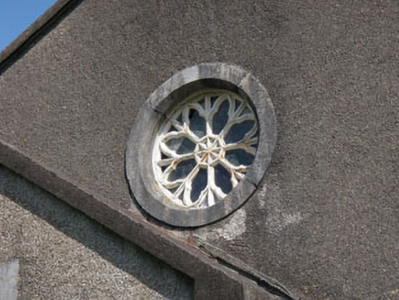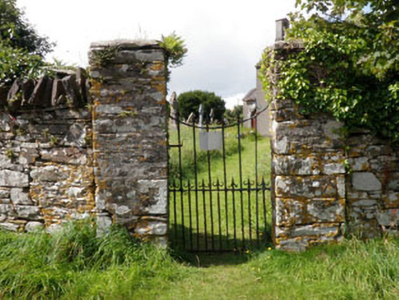Survey Data
Reg No
20912215
Rating
Regional
Categories of Special Interest
Architectural, Artistic, Social
Original Use
Church/chapel
Date
1850 - 1890
Coordinates
139954, 44379
Date Recorded
24/08/2009
Date Updated
--/--/--
Description
Freestanding double-height Church of Ireland church, built c.1870, currently disused. Three-bay nave, having porch to west, single-bay transept and single-storey extension to rear (north). Pitched slate roofs having rendered gable copings, eaves courses, cast-iron and uPVC rainwater goods. Lean-to slate roof to extension. Roughcast rendered walls throughout with rendered bell-cote to west elevation of nave having pitched projecting moulded render coping and plinth. Diagonal rendered buttresses to corners of transept with splayed rendered caps. Pointed arch window openings throughout with chamfered ashlar limestone sills, reveals and block-and-start surrounds. Timber framed lancet windows with cast-iron quarry-glazing and intersecting tracery. Timber framed lancet window to north elevation of transept, having moulded transoms and mullion with timber Y-tracery incorporating quatrefoil and mouchettes. Oculus window openings with ashlar limestone surrounds and chamfered reveals to gables of nave and transept, having cast-iron framed rose-window. Pointed arch door openings to front (south) elevation of porch and to rear (north) elevation of extension. Ashlar limestone block-and-start surrounds with chamfered reveals with stop-chamfer, plinth-blocks and timber battened doors throughout. Ashlar limestone threshold and doorstep to rear (north) extension entrance. Set back from road within graveyard containing variety of stone grave markers dating from 1769 to 2003. Rubble stone boundary wall with solider rubble stone coping, having cast- and wrought-iron pedestrian gate with decorative spear finials to south-east supported by dressed rubble stone piers.
Appraisal
A fine Church of Ireland church which retains much of its historic fabric and features intact. Set in close proximity to Kilnagross House, it may have been patronised by the nineteenth century owners of that house. Cartographic changes indicate that the church is built on the site of an earlier building, while the surrounding grave markers dating from the eighteenth century are reminders of the graveyard's long history.

